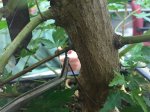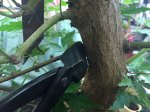pweifan
Shohin
I have a question.
When spreading the roots and pegging them in place ate they laid flat or is something put under them in various places to give them an undulating look?
I saw it somewhere. Maybe @Smoke blog? Pieces of chopstick were placed under the root in various places to put a lump in them.
Maybe I dreamt it up but I don't think so.
I saw this recently as well. I couldn't find the article but here's an example of what you're talking about.








